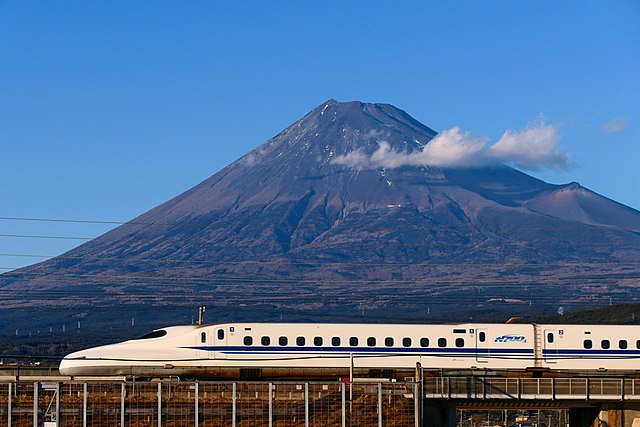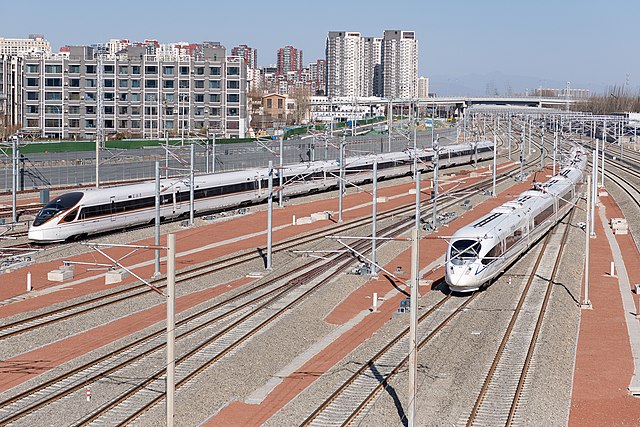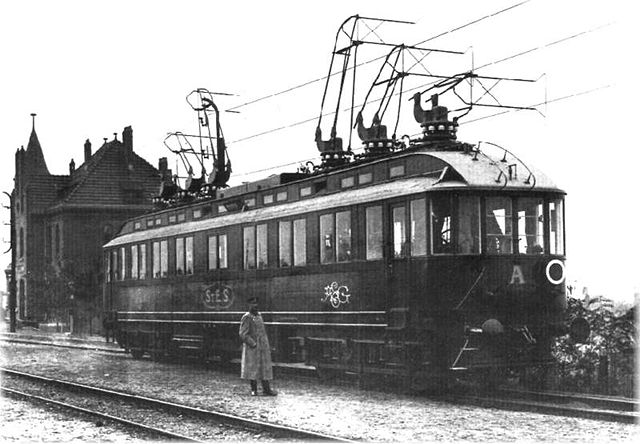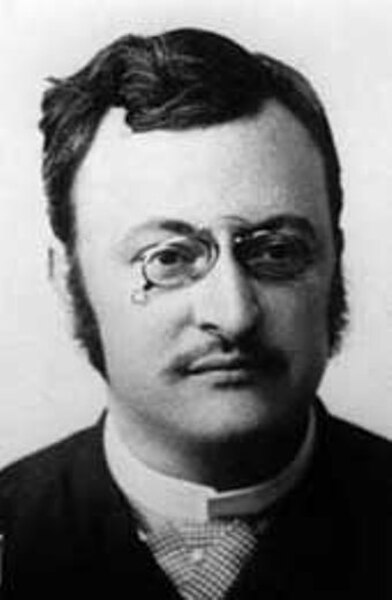The TGV is France's intercity high-speed rail service, operated mainly by SNCF. SNCF worked on a high-speed rail network from 1966 to 1974 and presented the project to President Georges Pompidou who approved it. Originally designed as turbotrains to be powered by gas turbines, TGV prototypes evolved into electric trains with the 1973 oil crisis. In 1976 the SNCF ordered 87 high-speed trains from Alstom. Following the inaugural service between Paris and Lyon in 1981 on the LGV Sud-Est, the network, centered on Paris, has expanded to connect major cities across France and in neighbouring countries on a combination of high-speed and conventional lines. The TGV network in France carries about 110 million passengers a year.
TGV Sud-Est (left), the first equipment used on the service; and TGV 2N2 (right), the newest equipment used on the service, at Gare de Lyon station, 2019
Service to Geneva, Switzerland, 1982
A TGV Duplex in Héricourt, Haute-Saône on the LGV Rhin-Rhône
TGV service (partly on classic lines) to Bourg-Saint-Maurice in the French Alps is popular in the winter season.
High-speed rail (HSR) is a type of rail transport network utilizing trains that run significantly faster than those of traditional rail, using an integrated system of specialized rolling stock and dedicated tracks. While there is no single standard that applies worldwide, lines built to handle speeds above 250 km/h (155 mph) or upgraded lines in excess of 200 km/h (125 mph) are widely considered to be high-speed.
The Tokaido Shinkansen high-speed line in Japan, with Mount Fuji in the background. The Tokaido Shinkansen, which connects the cities of Tokyo and Osaka, was the world's first high-speed rail line.
High-speed trains operated by China Railway at Beijing Chaoyang railway station; China has the most extensive high-speed rail network in the world.
The German 1903 record holder
Károly Zipernowsky








